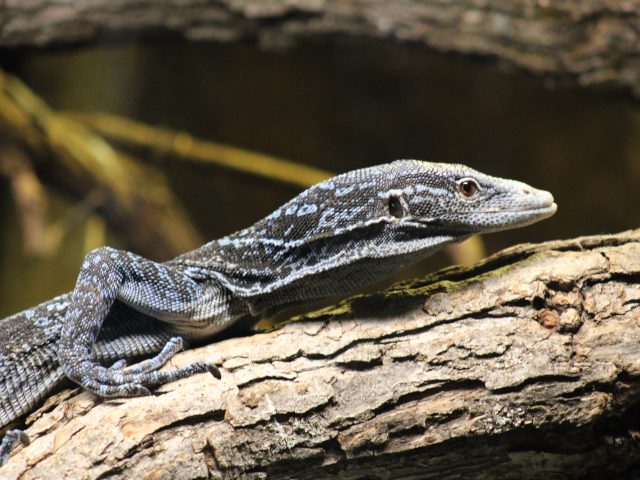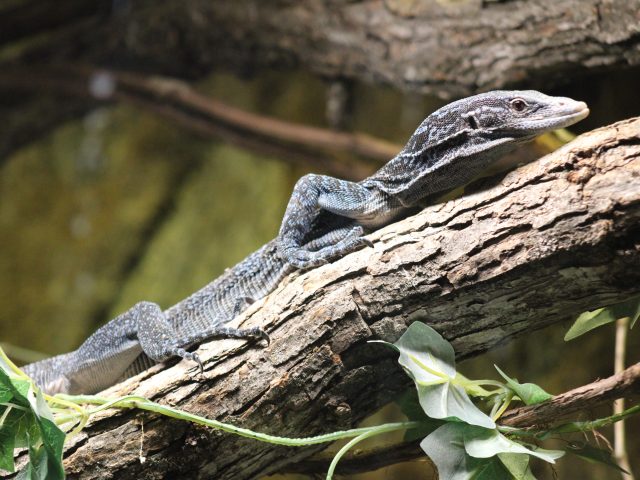Characteristics
The body of a blue-spotted tree monitor is black, with brilliant blue scales scattered throughout, forming eye-like spots on its back. Their snout is light blue, and their lower jaw is white. Their tail is prehensile and almost twice as long as their body. The largest male monitors can reach lengths of up to 3.5 feet. Despite their size, they are adept at blending in and disappearing into the trees.
Behavior
These are shy and diurnal lizards, with an almost entirely arboreal lifestyle. Due to their recent discovery and secretive nature, not much is known about their behavior in the wild.
Did You Know?
They aren’t actually blue. The scales that appear blue reflect light that appears blue to the human eye. In fact, these scales are technically colorless.
Reproduction
Female blue-spotted tree monitors lay their eggs approximately 3-5 weeks after mating, with a clutch consisting of 3-6 eggs. She can lay multiple clutches a year. Hatching occurs after 150 days.
Our Animals
We have one blue-spotted tree monitor on exhibit in the Reptile Building. Her name is Lily.
Threats
This species is a target for the pet trade and though they are listed under CITES Appendix II, the lack of export quotas in their home country has put the population at risk. Deforestation, urban development and logging are also threatening the habitat of this species.
How Can You Help?
Do your research before buying a pet reptile to ensure you are purchasing a captive-bred individual. Help stop the removal of reptiles and amphibians from the wild for the pet trade.





